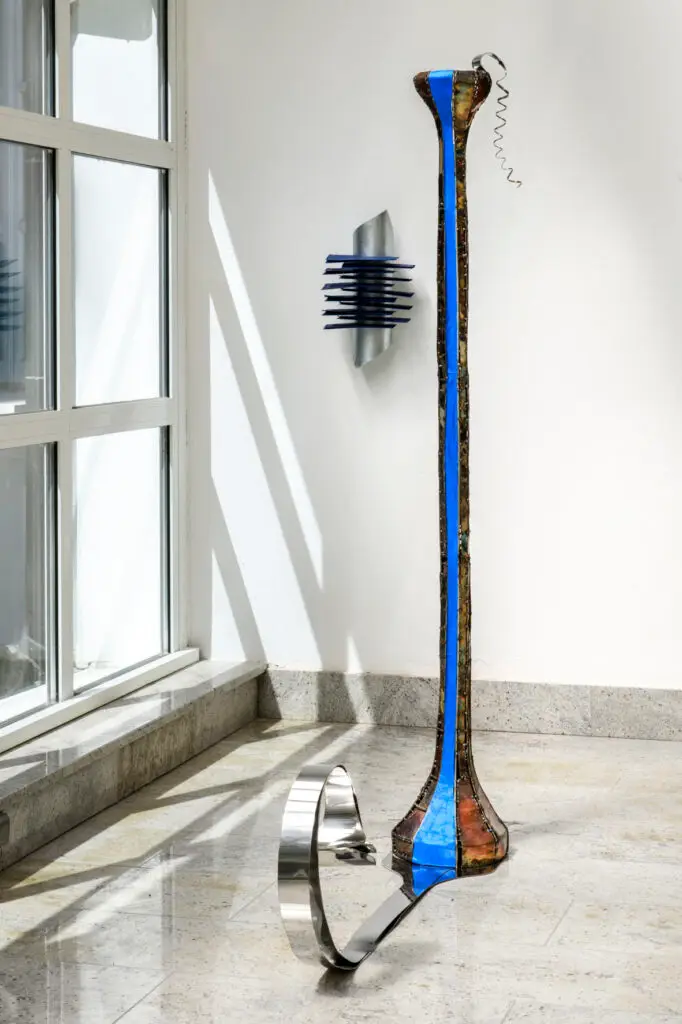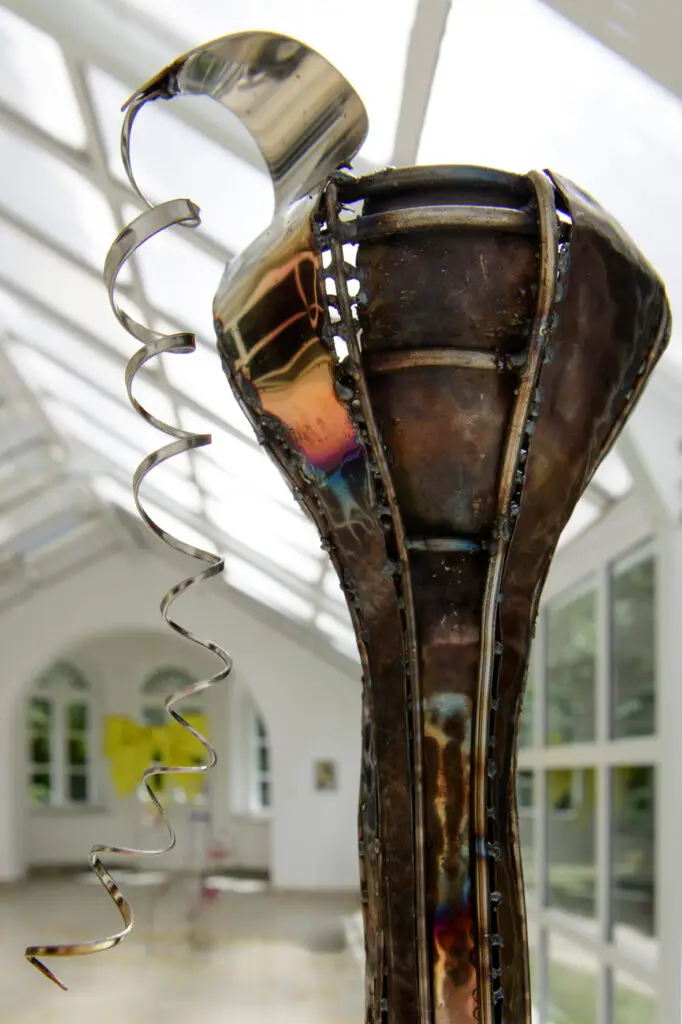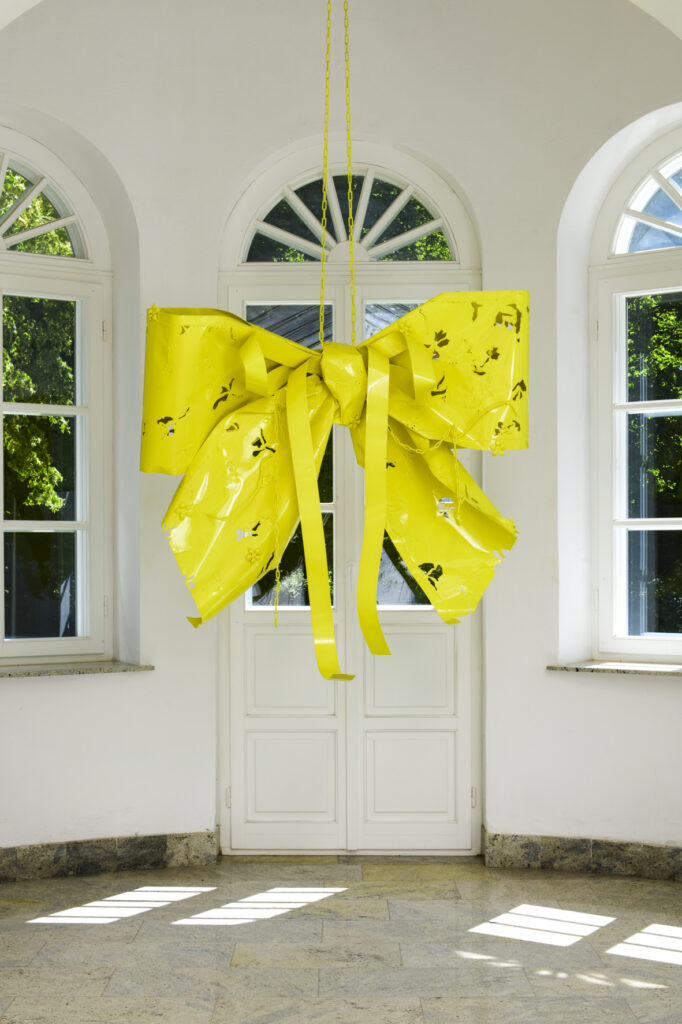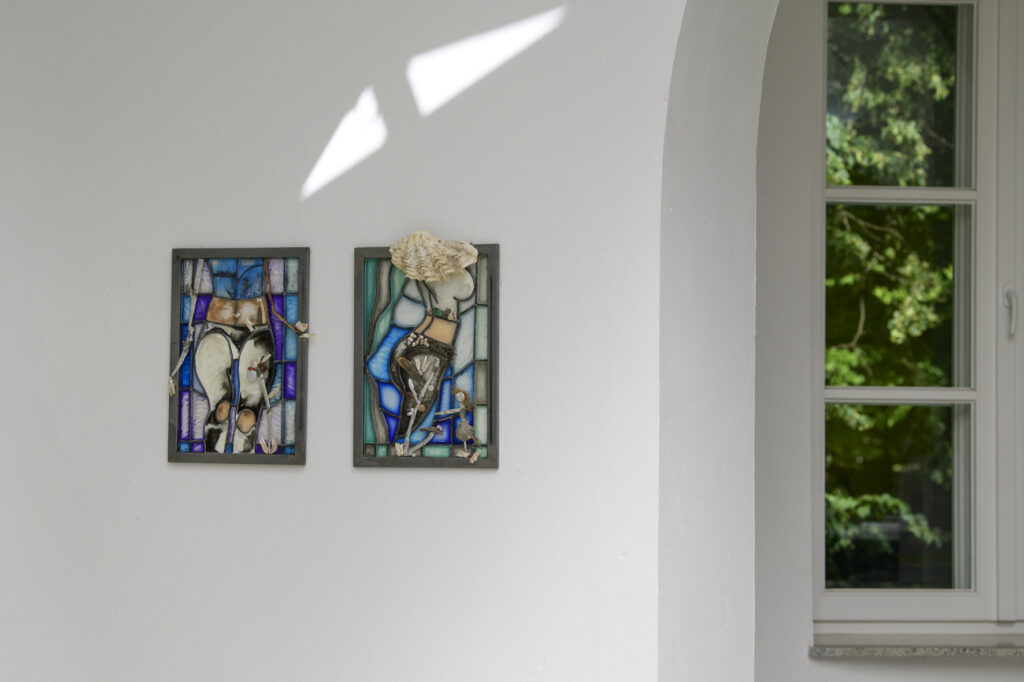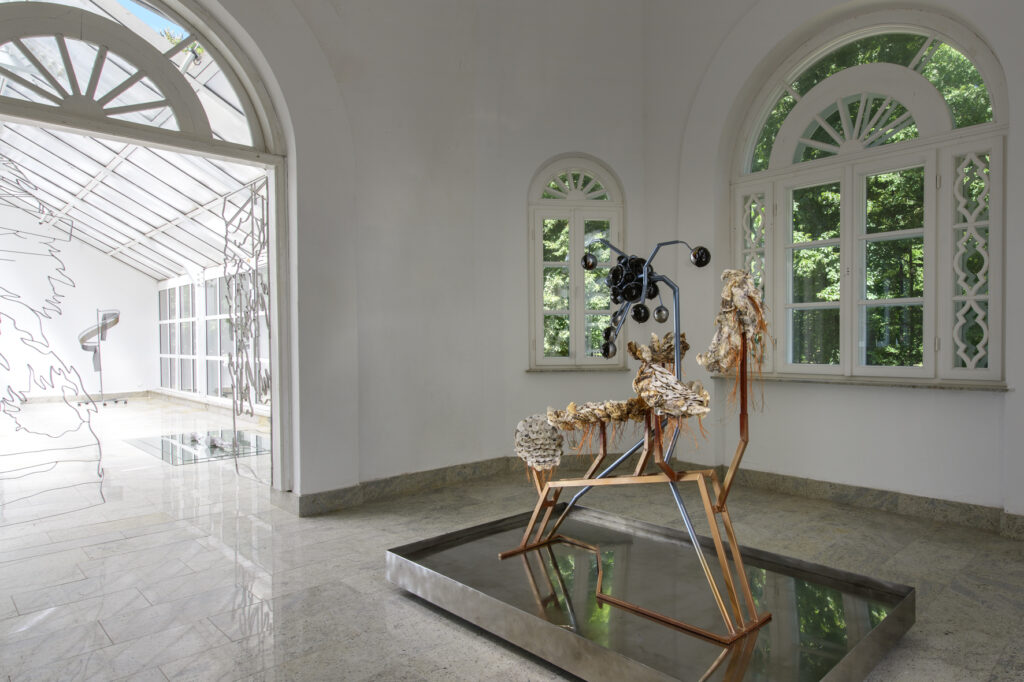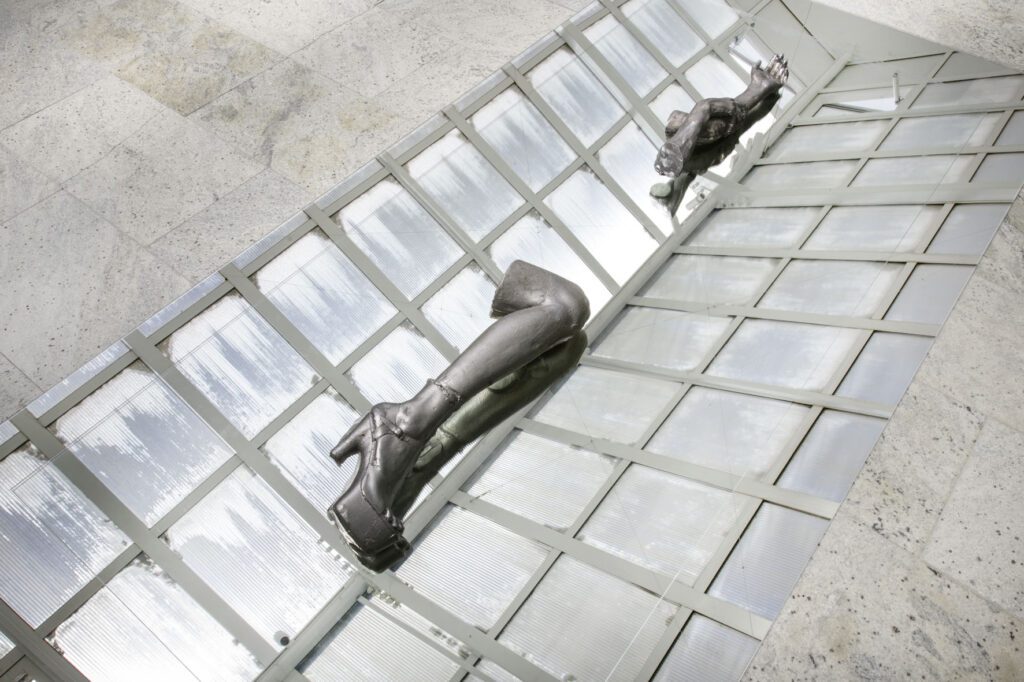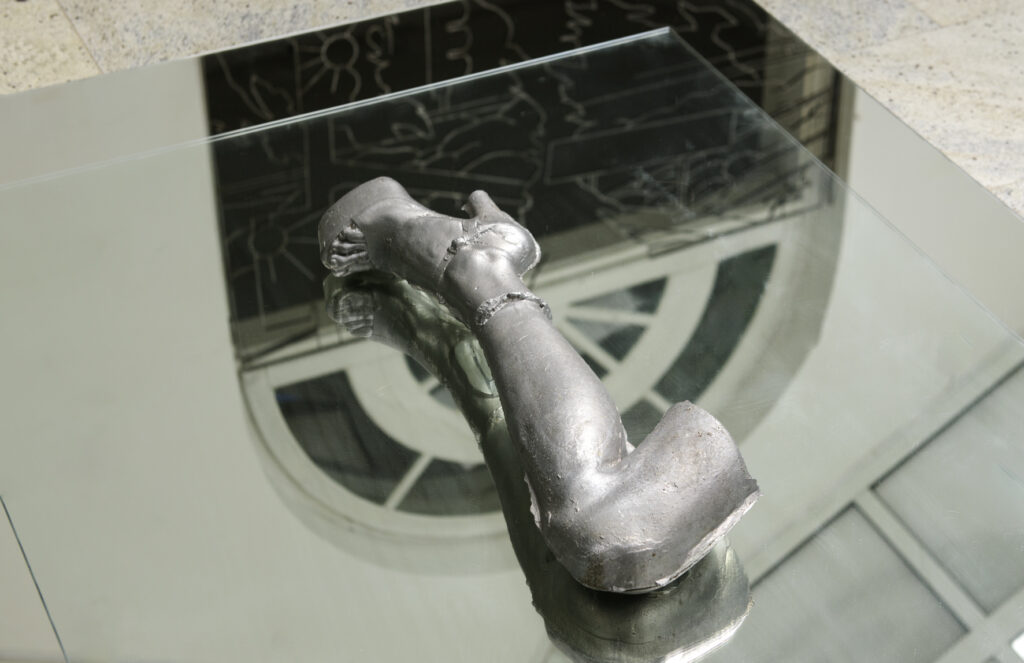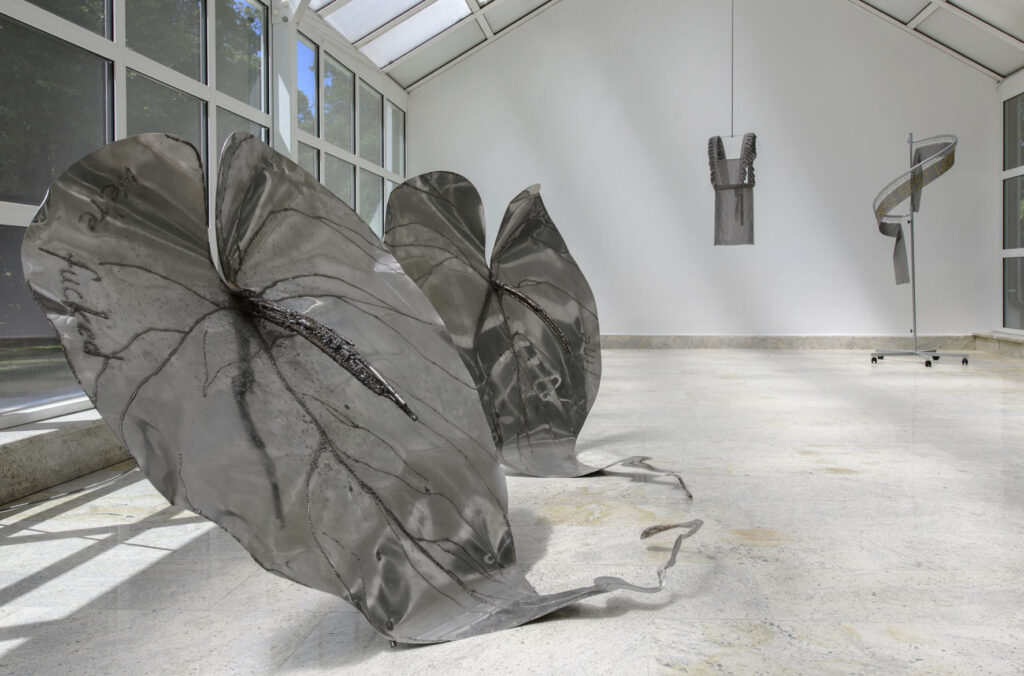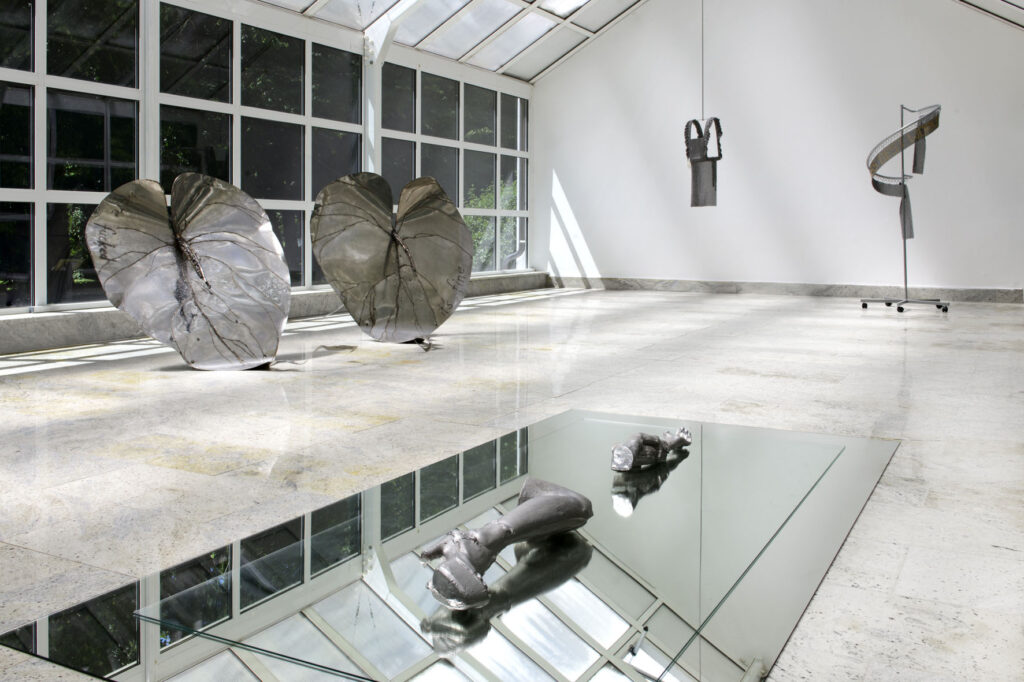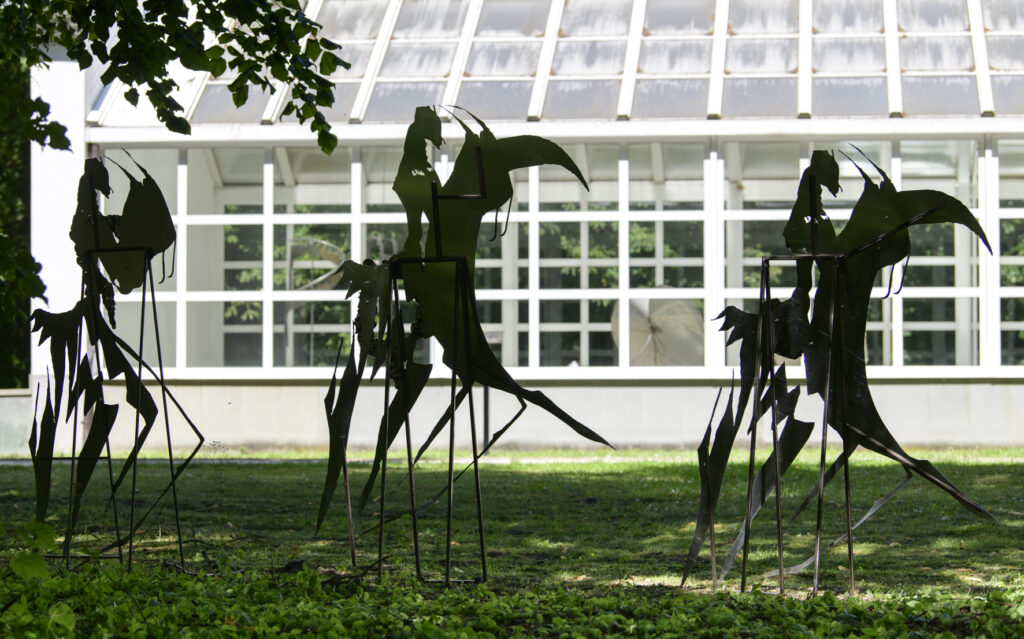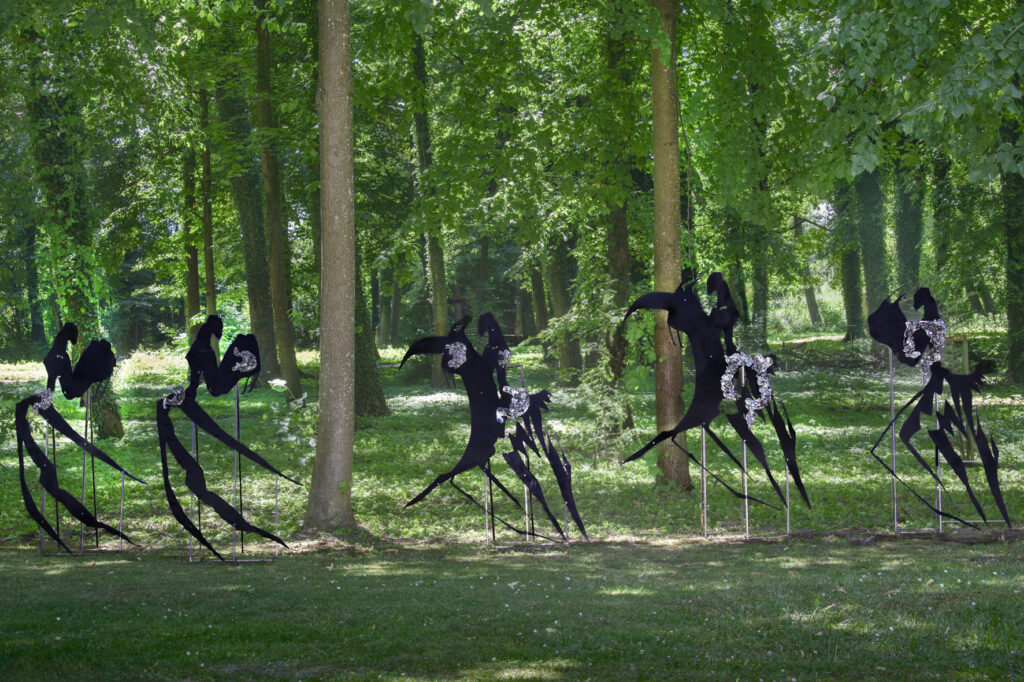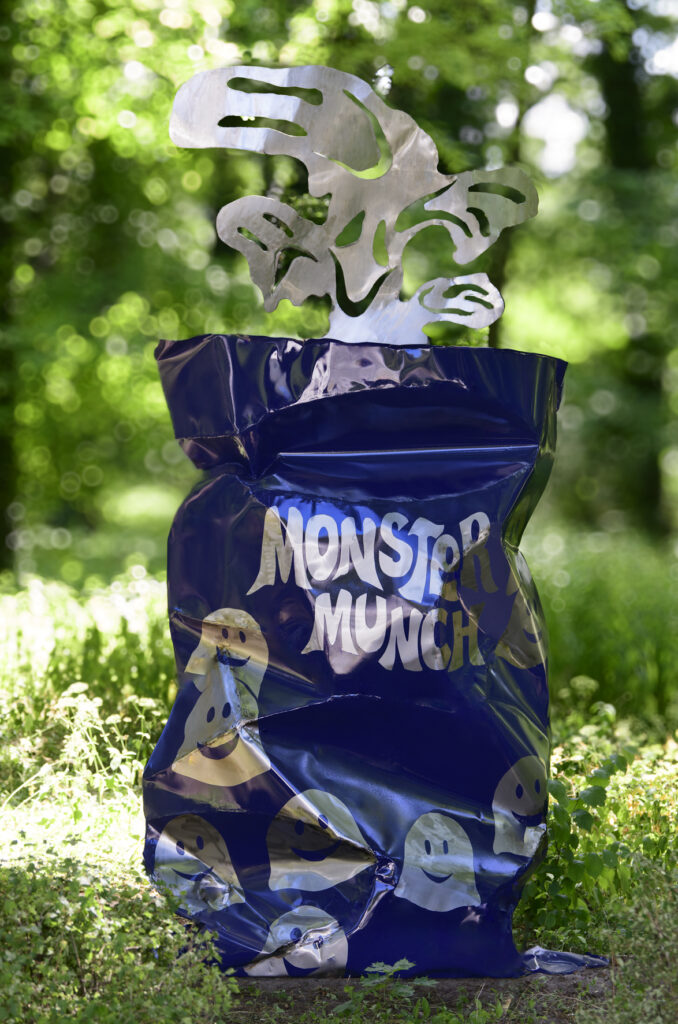Title: Soft Smiths. Contemporary Women’s* Metalwork
Artists: Michalina Bigaj, Hannah Sophie Dunkelberg, Agata Ingarden, Lito Kattou, Magdalena Lazar, Lucia Leuci, Markéta Magidová, Ola Nenko, Emma Passera, Ala Savashevich, Weronika Wysocka
Curators: Michalina Sablik, Magdalena Lazar
Venue: Polish Center of Sculpture in Orońsko
Photos: Jacek Kucharczyk

SVAROGI. Emancipation and Women’s* Metalwork
Slavic beliefs assumed the existence of many gods, but none of them would exist without the god of the sun, fire and metallurgy, Svarog. He is sometimes compared to Mercury of the Romans, or the Hermes of the Greeks. He controlled all the deities during sleep, and his power was almost unlimited. Svarog was the patron of blacksmiths, who prided themselves on playing an important role in their communities, creating metal tools, fittings, keys, horseshoes, and in times of war also weapons and ammunition. They were credited with possessing secret, alchemical knowledge, which is why not everyone was allowed into this profession, and women were excluded entirely.
After centuries of oppression, women decided to rebel against the patriarchal power of Svarog. They began by taking over the forges and the machines. They called themselves blacksmiths and welders; strong women wielding fire and liquid metal. Today, in smoky forges and pristine workshops, they heat the ore to red-hot, then flatten, bend, forge, or cut the bars. They weld the surface of steel or cast aluminum. They pound with heavy hammers and harden the finished shapes in cold water. Dressed in aprons, protective gloves, and visors, they create metal sculptures and installations. Fire and physical craft work give them a sense of agency, emancipation, and strength. We women blacksmiths, young and old alike, have brought to life new goddesses—Svarogi, who from this time onwards will watch over every tool or weapon leaving the forge so that they are used for a good purpose.
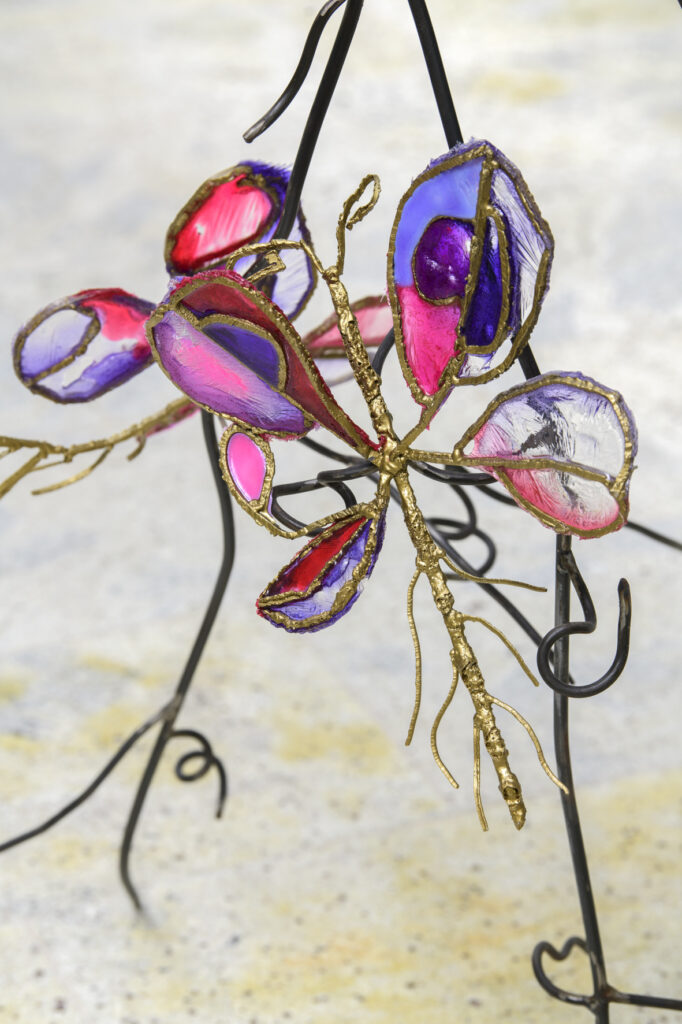
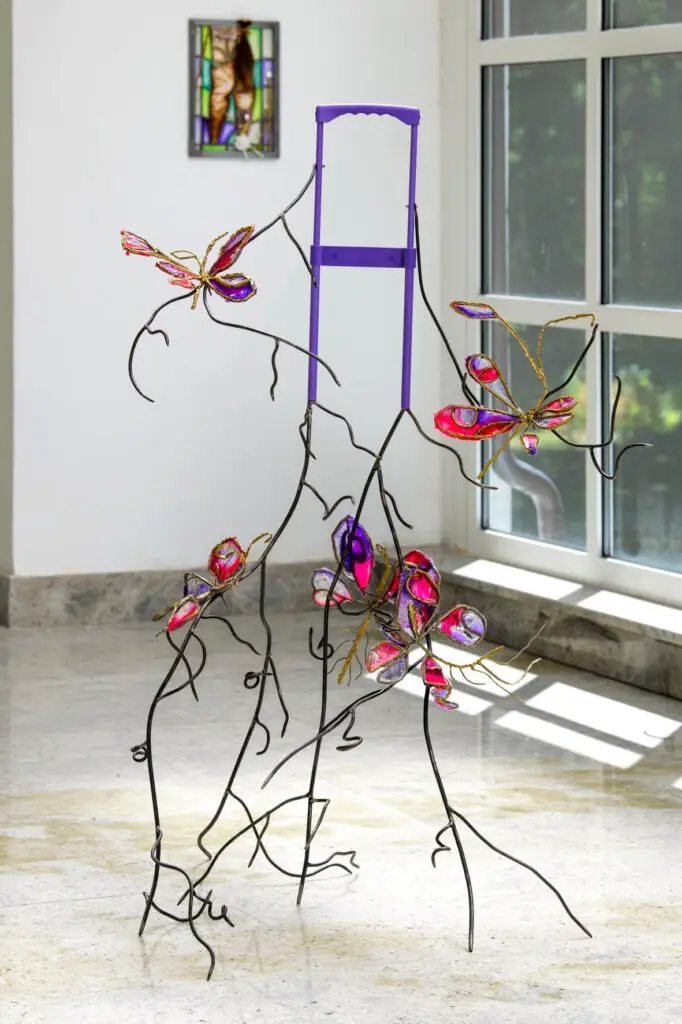
The exhibition Svarogi presents eleven contemporary women artists from Poland and Europe involved in metalwork. This is the next generation after pioneers such as Barbara Hepworth, Magdalena Abakanowicz, Louise Bourgeois, Julia Keilowa, Magdalena Więcek, and Alice Aycock. These are artists fully engaged in the creative process and the development of artisan skills. They seek to tame that which has been considered dangerous for centuries. They weld and liquefy metal, cut steel with laser and plasma, joining it together cold and hot. They adopt techniques that in the history of art were used to create monuments to great people (men), commemorate wars, and represent the glory of a nation, but also to create large buildings, bridges, ships, i.e. symbols of colonial power, industrial growth, and technological progress. Today, the female artists are using traditional techniques to demystify and destabilize historical narratives. They have introduced new topics, sensibilities and poetics into the frozen metalwork. Their works are full of humor, irony, and distance, like the works of Hannah Sophie Dunkelberg, who, referencing car bodies—a male fetish—creates colorful, girlish, pop-culture forms. They have also incorporated new aesthetics into their works, such as surrealism or grotesque, present; for example, in the works of the Italian artist Luca Leuci. In contrast to grand narratives, they focus on micro-stories, both private and political. They invoke the embodied female experience, whilst also indicating an entanglement with non-human entities and processes. They offer a counter-address to the traditional representations of women: like Agata Ingarden, who creates an alternative version of Venus, a biological machine connecting with its surroundings, or Lito Kattou, who populates a garden with praying mantises, perceived in many early civilizations as creatures with supernatural powers, as well as being the embodiment of the femme fatale and a symbol of female domination.
Other micro-stories refer to the functioning of women in a social context. Markéta Magidová seeks to explore motherhood, creating colorful metalwork based on her children’s “scribbles,” introducing humor, lightness, and playground aesthetics. Ala Savashevich recalls the socialization of women into the roles of mothers and workers in authoritarian and patriarchal Belarus. For Savashevich, the apron becomes an element of emancipation—being both armor and weapon against exploitation and violence. In turn, Ola Nenko’s large sculpture, its form alluding to an oversized packet of crisps, tells the story of sexual violence against women.
In heavy metal, the artists endeavor to convey strong emotions, such as euphoria, loss, falling in love. Magdalena Lazar refers to the world of plants and the symbolism associated with them in order to convey the personal experience of love and mourning. Emma Passera makes casts of her body parts, creating artefacts charged with strong emotions. Michalina Bigaj, on the other hand, takes up ecological issues related to the climate catastrophe in which we are tragically entangled. Weronika Wysocka places in the space of the Orangery an object that is a kind of accumulator of meanings, a machine absorbing cultural sources, a summation of the author’s philosophical and existential inquiries.
The return of metalwork is part of a broader trend pertaining to the “new materiality” in art, evident in the renewed interest in and redefinition of traditional artistic techniques such as ceramics, fabric, metalwork, and glass art. The featured artists use metalwork tools and materials in new ways. They freely combine them with other materials, indicating intersections of creativity. Some of them have sought to widen the cracks of traditional sculptural categories so as squeeze through them, deftly combining steel with liquid caramel, broken mirror, melorecitation, cables, and chitinous clam shells. Women metalworkers pay attention to the material. They’re studied patience is to the fore, as they examine its provenance, history, and broader contexts of meaning.
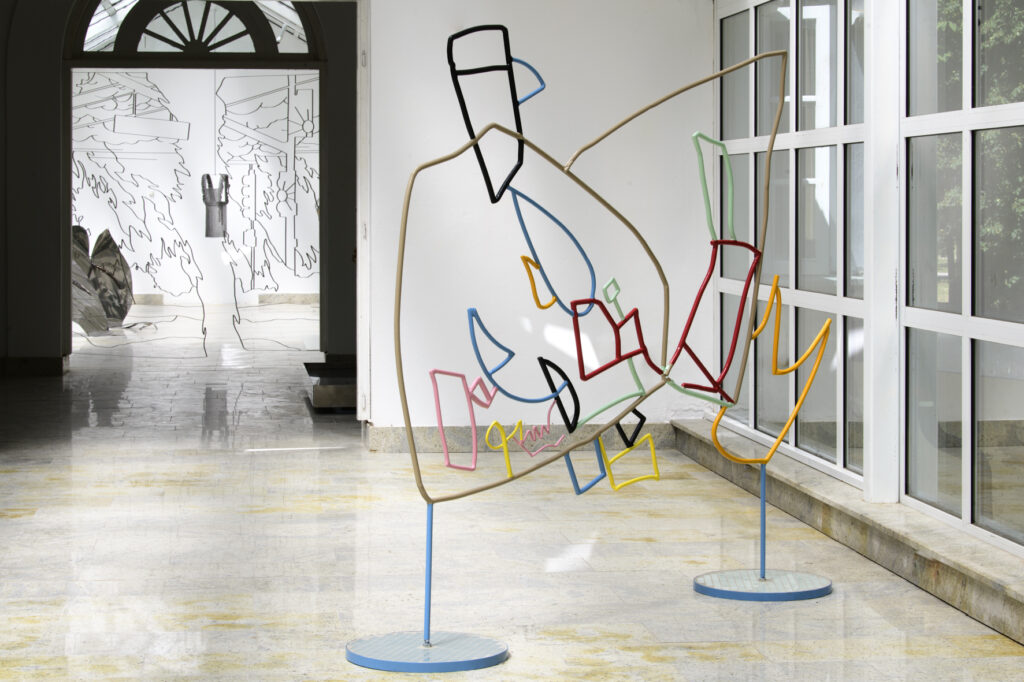

For years, sculptural materials such as stone or metal were considered inanimate elements. As Byung-Chul Han wrote, in the era of digitalization, reality has been rapidly dematerialized and stripped of its “magic of matter,” which has been particularly acute during the pandemic. At the same time, over the years of conquest and consumption, the earth was brutally exploited, because what was inside was considered as a dead resource that could be used instrumentally. Now we need a turn towards rematerialization and reromanticization of reality. A turn that takes us towards the idea of matter as a living, causative entity in relation to other entities.
The artists work corporeally with the sculptural material, which can be described in a phenomenological way. The choreography of their work includes sensitive gestures, such as polishing, rounding and maintaining temperature (often crucial for shaping metal, requiring great mindfulness and delicacy in relation to the matter), but also the aggressive movements of the bends, blows, and cuts. The procedures of welding and cutting steel become emancipatory tools on many levels, emanating alchemical power and constituting a captivatingly extreme spectacle. In the blue fumes there is bright risk, excitement, and drama. This work heightens the feeling of strength, tension, and sensuality, and at the same time, it is characterized by uncompromising boldness. The smallest price one pays for it are back pain, tingling wrists, and skin imperfections.
* We understand femininity not only in gender categories, but above all as an action that lies outside of the capitalist patriarchy. We seek to emerge from binary situations that are still oppressively present. We want for spaces such as the workshop or kitchen to be neutral and friendly, and not to stand in opposition to each other depending on the gender of the users.
